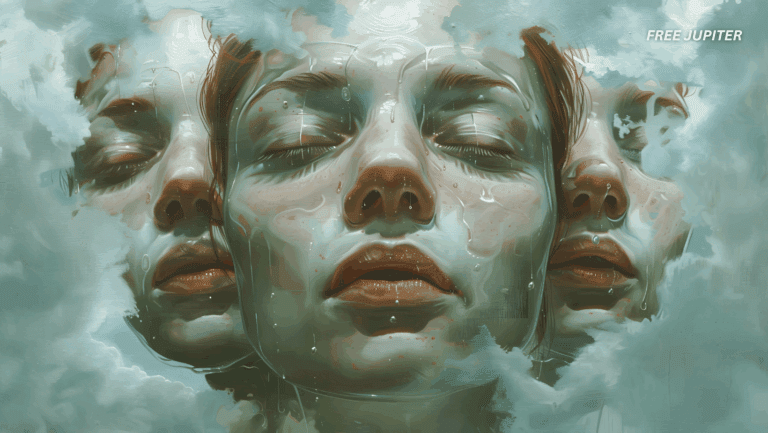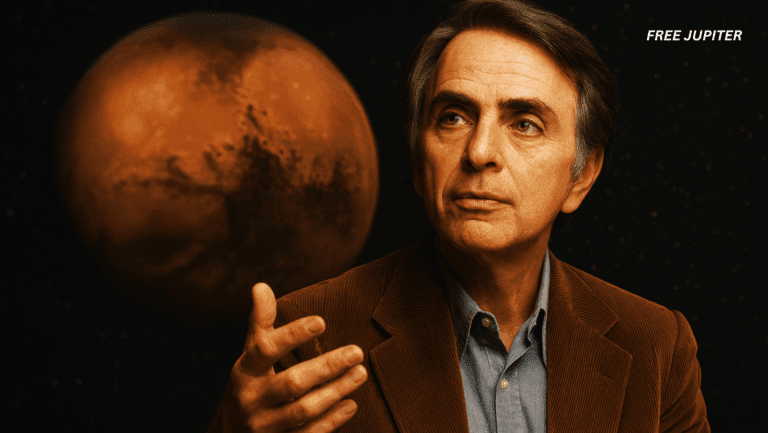Friendly Note: FreeJupiter.com shares general info for curious minds 🌟 Please fact-check all claims—and always check health matters with a professional 💙
Black holes are already some of the strangest objects in the universe. They swallow up matter, bend light, and warp time itself. But a new theory suggests they might be doing something even wilder: transforming collapsed star material into dark energy — the mysterious force that’s pushing the universe to expand faster and faster.
Sounds wild? Absolutely. But if true, this theory could explain why the universe keeps throwing us curveballs—what scientists politely call “cosmic hiccups.”
Black Holes as “Dark Energy Bubbles”
The idea, called the Cosmologically Coupled Black Hole (CCBH) hypothesis, suggests that black holes aren’t just cosmic vacuum cleaners. Instead, when massive stars run out of fuel and collapse into black holes, some of their leftover matter might actually transform into dark energy.
In this picture, each black hole becomes a kind of bubble or droplet of dark energy. That’s a huge claim, because dark energy makes up about 68% of everything in the universe, yet we still don’t know exactly what it is.
Read more: Scientists Find Evidence Pointing to a Compact Object Hidden Inside the Sun
Why Scientists Are Entertaining This Wild Idea
Researchers became interested in this theory due to data from the Dark Energy Spectroscopic Instrument (DESI), a project that maps galaxies stretching back 10 billion years. DESI’s results suggest that dark energy might not be constant, as most models predict, but instead could be changing over time.
This clashes with the prevailing model of cosmology, known as Lambda Cold Dark Matter (ΛCDM), which assumes that dark energy has always been of constant strength. If DESI is right, something big is missing from our cosmic playbook.
That’s where the CCBH theory steps in. It proposes that dark energy didn’t just appear fully formed after the Big Bang. Instead, it grew stronger as stars were born, lived out their lives, and collapsed into black holes. In other words: no stars, no black holes; no black holes, no dark energy.
Linking Star Formation to Dark Energy
The twist here is that DESI’s findings line up neatly with what telescopes like Hubble and the James Webb Space Telescope have seen about star formation. Billions of years ago, stars were forming at a furious pace. As they lived and died, they left behind black holes — which, under this theory, were quietly pumping dark energy into the universe.
This would explain why dark energy seems to have grown more influential only after the universe cooled enough for stars to form. It also connects the largest scales of the cosmos with the smallest: the life and death of individual stars shaping the entire fate of the universe.
Solving the “Neutrino Headache”
The CCBH hypothesis doesn’t just address cosmic expansion. It also offers a possible fix to a long-standing mystery about neutrinos — tiny, ghostlike particles that pass through everything (including you) by the trillions every second.
Physicists know neutrinos must have a small but non-zero mass. The trouble is, some cosmological models imply neutrinos should have a negative mass, which doesn’t make sense in physics.
Here’s where the new theory helps: if black holes slowly convert matter (like protons and neutrons) into dark energy, then there’s less leftover matter to account for since the Big Bang. This “missing matter” means neutrinos don’t need to be squeezed into impossible values anymore. Instead, their masses line up with what ground-based experiments actually measure.
For scientists, that’s a relief. Negative mass? Not so much.
Read more: New Research Shows Black Holes Are Cosmic Tunnels, Not Bottomless Voids
A Theory Still on Trial
Of course, this is still just a bold idea — one that will need much more testing before it can be considered a serious replacement for existing models. Even its supporters admit it’s unconventional.
But as Boston University physicist Steve Ahlen put it, this is how science works. You come up with new ideas, test them, and throw out the ones that don’t hold up. What makes CCBH exciting is that it’s at least mathematically solid, and it offers explanations for multiple puzzles all at once.
Why It Matters
If proven correct, the CCBH hypothesis could reshape how we see black holes — not just as cosmic destroyers, but as engines that help fuel the very expansion of the universe. It would also mean that the history of stars and galaxies is directly tied to the mysterious dark energy driving cosmic acceleration.
As Arizona State University professor Rogier Windhorst said, what’s thrilling is not just the numbers lining up, but that the theory makes sense of so many disconnected problems.
For now, researchers are cautious but intrigued. As Gregory Tarlé, a scientist with DESI, put it: “Intriguing, at the very least… compelling might be the better word.”
The research, published in Physical Review Letters, doesn’t claim to have solved the universe’s biggest mysteries once and for all. But it does remind us of something important: sometimes the strangest ideas are the ones that move science forward.
Read more: After Half a Century, Scientists Finally Catch The Elusive ‘Ghost Particles’
A Universe Rewritten?
It’s a bold claim, but that’s how science moves forward—by daring to imagine what seems impossible. Whether this theory holds or collapses under scrutiny, one thing’s clear: the universe still has tricks up its sleeve, and black holes might just be the biggest plot twist of them all.
So, the next time you hear about a star collapsing into a black hole, remember—it might not be the end of a story. It could be the beginning of the universe’s biggest secret.
Final Thoughts
The universe often challenges our sense of certainty, and theories like the Cosmologically Coupled Black Hole hypothesis remind us that even the strangest possibilities deserve attention. Whether or not black holes truly act as hidden engines of dark energy, the idea highlights how much we still have to learn about the cosmos.
What’s striking is how interconnected everything might be—the life of a single star could ripple outward to influence the expansion of the entire universe. If nothing else, this theory pushes scientists to rethink assumptions, refine their models, and keep questioning what lies beyond the visible.
Science advances not only through answers but also through daring questions. And in a universe where black holes may secretly shape cosmic destiny, the real wonder lies in knowing that discovery is far from over.










